Earth-friendly fencing balances property boundaries with wildlife movement needs. Keep fences below 40 inches with 12-inch bottom clearance for small animals. Install visibility markers every 2-3 feet to prevent bird collisions. Create strategic gaps (15cm for small species, 30cm for larger ones) along natural wildlife paths. Use native hedgerows as living boundaries and incorporate water features as natural barriers. Consider seasonal adjustments during migration periods. These ten corridor solutions protect both your security needs and local biodiversity.
Understanding Wildlife Movement Patterns in Your Area

Before designing effective wildlife corridors, you’ll need to understand how animals move through your specific landscape. Different species follow distinct wildlife movement patterns—deer and pronghorn often travel along established migration routes, while elk and caribou require vast, connected habitats to find food and water throughout the seasons.
GPS tracking research reveals that barriers can drastically alter animal behavior, often with deadly consequences. Watch for signs of wildlife activity on your property, noting trails, tracks, and seasonal patterns.
Small creatures like amphibians and rodents move between multiple habitats for breeding and foraging, requiring different considerations than larger mammals.
Study your local ecology to identify which species frequent your area. This knowledge will help you create corridors that accommodate the specific needs of your regional wildlife population.
Selecting Native Hedgerows as Living Fence Boundaries
Native hedgerows offer you significant ecological benefits as living boundaries, supporting local wildlife while enhancing your property’s biodiversity.
You’ll need to select plants that match your region’s soil and climate conditions, ensuring they’ll thrive without extensive maintenance.
Your hedgerow can provide year-round support for wildlife when you include species that flower, fruit, or offer shelter during different seasons.
Native Hedgerow Selection Benefits
Selecting the right hedgerows acts as a cornerstone strategy in wildlife corridor design.
When you choose native plants for your living fence, you’re creating a powerful ecosystem support system that benefits local wildlife in multiple ways.
Native hedgerows provide essential food, shelter, and nesting sites for birds, insects, and small mammals while forming natural corridors that allow wildlife to move safely through landscapes.
Their extensive root systems improve soil health, prevent erosion, and enhance water retention.
You’ll find that diverse native plantings create resilient boundaries that naturally resist pests and diseases.
These living fences attract beneficial pollinators and support biodiversity far more effectively than non-native alternatives.
Regional Plant Compatibility
Three key bioregional factors must guide your hedgerow selection to create thriving wildlife corridors.
First, assess your local soil composition—sandy, clay, or loam soils each support different native species that’ll establish more successfully without amendments.
Second, understand your region’s rainfall patterns and select drought-tolerant natives in drier areas to minimize irrigation needs.
Finally, research which plants historically thrived in your specific ecosystem. These species will naturally attract and sustain local wildlife, turning your boundaries into effective wildlife crossings.
For example, hawthorn and blackthorn support over 300 insect species in the UK, while elderberry provides essential food for birds across North America.
Seasonal Wildlife Support
When designing native hedgerows as living boundaries, consider how your selections will support wildlife throughout changing seasons. Choose plants that flower and fruit at different times to provide year-round food sources. Early spring bloomers sustain pollinators emerging from winter, while summer berries feed birds during breeding season.
Include evergreen species that offer winter shelter when deciduous plants lose their foliage. Structure your hedgerow with varying heights—low shrubs for ground-dwelling creatures and taller plants for nesting birds. This diversity creates multiple microhabitats within a single boundary.
Remember that native plants require less maintenance while offering maximum benefit to local wildlife. They’ve evolved alongside regional fauna, forming relationships that non-native species can’t replicate.
Your living fence becomes more than a boundary—it transforms into a vibrant wildlife corridor supporting seasonal migrations and daily movements.
Designing Gaps and Tunnels for Small Animal Passage
Creating effective wildlife passages requires thoughtful consideration of small animals’ needs and behaviors. When installing fences, design gaps with a minimum height of 15 cm to allow rabbits and hedgehogs to pass through without getting trapped.
These gaps should follow natural wildlife movement patterns, which you can identify using GPS tracking data.
For larger species like foxes and raccoons, incorporate tunnels at least 30 cm in diameter lined with soft materials. These underpasses provide safe passage and protection from predators.
Strategic placement of these access points at key habitat connections maximizes their effectiveness.
Don’t forget to maintain these passages regularly, clearing debris and ensuring they remain functional.
Your thoughtful design choices create crucial connectivity in fragmented habitats, supporting the free movement of small wildlife through your property.
Creating Stone Wall Habitats With Strategic Openings

Stone walls offer more than just boundary markers for your property; they serve as vibrant ecosystems when designed with wildlife in mind. By incorporating strategic openings and tunnels within your stone wall, you’ll create vital pathways for small animals moving between habitats for feeding and breeding.
Include gaps of various sizes to accommodate different species while maintaining the wall’s structural integrity. The textured surface of your stone wall naturally attracts mosses and lichens, which in turn draw insects and provide food sources for wildlife.
Don’t forget to add wider gateways for larger animals to prevent injury and entrapment. Regular maintenance is important—keep openings clear of debris and check that passages remain accessible.
Your thoughtfully designed stone wall becomes not just a boundary, but a wildlife corridor supporting biodiversity.
Raising Fence Bottom Rails for Ground-Dwelling Species
Raise your fence’s bottom rail to at least 30 centimeters to create essential pathways that allow rabbits, hedgehogs, and other ground-dwelling creatures to travel freely through your property.
You’ll find that a gap of 30-40 centimeters strikes the perfect balance – large enough for small mammals to pass underneath while still containing larger animals.
Remember to keep these openings smooth, free of sharp edges, and regularly maintain them to guarantee they remain functional wildlife corridors, especially during migration seasons.
Safe Passage Height
When designing wildlife corridors, you’ll find that proper fence height clearance serves as a crucial yet often overlooked element for ground-dwelling species.
Research shows that raising bottom rails at least 30 centimeters off the ground creates essential pathways for rabbits, hedgehogs, and other small mammals.
For ideal wildlife-friendly design, aim for a 40-centimeter gap at the fence base, which greatly reduces entrapment risks while promoting movement across fragmented habitats.
Consider incorporating sloped or rounded bottoms to enhance accessibility by eliminating sharp edges that might deter passage.
Remember to keep your top wire height at a maximum of 40 inches while regularly inspecting bottom rail clearances, especially during migration and breeding seasons when wildlife movement increases.
These simple adjustments to safe passage height can transform ordinary fencing into crucial wildlife corridors.
Small Mammal Movement
Small mammals navigate our landscapes with remarkable determination, yet their journeys often face unnecessary obstacles. You’ll enhance biodiversity by raising your fence’s bottom rail by at least 30 centimeters, creating essential pathways for small animals.
| Species | Benefit | Design Tip | Maintenance |
|---|---|---|---|
| Rabbits | Safe passage | 12-inch bottom clearance | Clear debris regularly |
| Hedgehogs | Access to resources | Staggered bottom rails | Check for blockages |
| Small rodents | Reduced isolation | 40-inch height limit | Remove accumulated materials |
| Ground mammals | Habitat connectivity | Mesh openings | Inspect seasonally |
Keep fence height below 40 inches to prevent entrapment while incorporating wildlife-friendly features like staggered rails or mesh openings. Regular maintenance prevents debris accumulation that might block these essential pathways, ensuring small animals can freely access food, water, and shelter across your property.
Installing Wildlife-Friendly Gates and Access Points

Thoughtful installation of wildlife access points serves as a critical component in any successful wildlife corridor design.
Wildlife access points are the cornerstone of effective wildlife corridor systems, ensuring safe passage for animals on the move.
You’ll find that species-specific solutions like wombat swing gates prevent fence damage while allowing safe passage for target animals. When you integrate these access points into existing fence systems, you’ll greatly reduce wildlife mortality rates.
To maximize effectiveness of your wildlife access points:
- Choose designs that allow specific wildlife through while blocking unwanted animals
- Install one-way gates in strategic locations based on known wildlife movement patterns
- Establish a regular maintenance schedule to guarantee gates remain functional despite weather and wildlife activity
Remember to collect feedback from local wildlife agencies and landowners to evaluate gate effectiveness and make necessary adjustments for ideal coexistence between wildlife and agricultural practices.
Incorporating Water Features as Natural Boundaries
Water features provide dual benefits as natural boundaries that enhance wildlife corridors while adding beauty to your landscape.
You’ll find that ponds create effective perimeter barriers that simultaneously offer drinking sources, habitat, and breeding grounds for local fauna.
When designing stream corridors, incorporate gentle slopes and strategic crossing points to facilitate safe wildlife movement while maintaining the barrier function that keeps unwanted visitors at bay.
Pond Boundary Benefits
While traditional fencing often disrupts wildlife movement patterns, incorporating ponds and water features as natural boundaries offers a multifunctional alternative that serves both wildlife and ecosystem needs.
You’ll create effective wildlife corridors while enhancing biodiversity throughout your property.
Water features provide three key benefits as natural barriers:
- They create safe passages for wildlife movement while offering essential drinking and foraging resources.
- They support diverse ecosystems, attracting amphibians, birds, and beneficial insects.
- They establish edge habitats when surrounded by native plant buffers, enhancing shelter and food availability.
Stream Corridor Designs
Beyond pond boundaries, stream corridors offer exceptional opportunities for creating continuous wildlife pathways across your property.
These natural waterways serve as built-in wildlife highways, guiding animals safely to food and water resources without the barriers traditional fencing creates.
When designing around stream corridors, incorporate gaps in fencing or add overhanging vegetation near water features. This guarantees smaller creatures can freely navigate between habitats without becoming trapped.
You’ll also benefit from the stream’s natural erosion control and improved water quality.
Your stream corridors naturally regulate local ecosystem moisture levels while supporting diverse plant life and providing shelter for both aquatic and terrestrial wildlife.
Using Visibility Markers to Prevent Bird Collisions
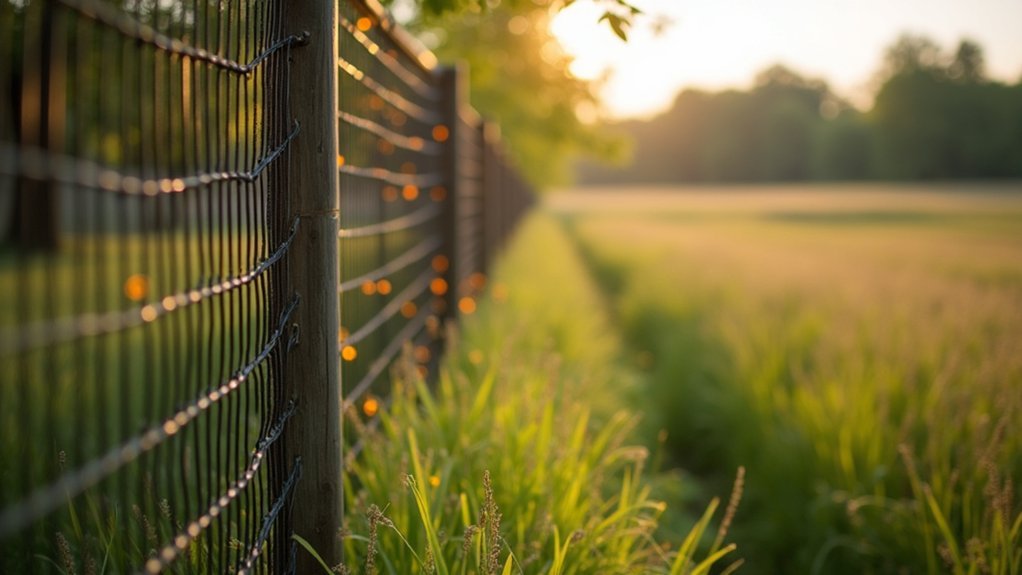
How often have you considered the deadly impact of invisible barriers on wildlife? Birds often can’t see fences until it’s too late, but you can prevent these fatal collisions by adding visibility markers to your fencing.
These simple additions can reduce bird collisions by up to 80%, especially in migration corridors.
For maximum effectiveness:
- Space your markers every 2-3 feet along the fence
- Choose contrasting colors like bright orange or yellow that stand out against natural backgrounds
- Replace faded or damaged markers regularly to maintain their effectiveness
Don’t underestimate the impact of these simple modifications. By making your fences more visible with flags or reflective tape, you’re creating safer wildlife corridors and protecting bird populations that might otherwise suffer unnecessary casualties.
Planning Seasonal Adjustments for Migration Periods
When migration season approaches, your wildlife corridor management should shift into a more dynamic phase.
Adapt your fence strategies by opening gates more frequently to support safe passage for animals traveling to feeding and breeding grounds.
Keep fences at or below 40 inches during migration periods to prevent smaller animals from becoming trapped while reducing obstacles for larger species.
Lowering fence heights to 40 inches or less creates safer migration corridors for both small and large wildlife.
Before migrations begin, inspect and repair any loose wires or sharp edges that could harm passing wildlife.
Consider incorporating wildlife-friendly design elements into your fences, such as raised sections or tunnels at key crossing points.
These modifications create essential pathways for migrating animals.
Learn your area’s migration patterns and peak periods so you can time these seasonal adjustments effectively, ensuring your property supports rather than hinders natural wildlife movement.
Balancing Security Needs With Ecological Connectivity
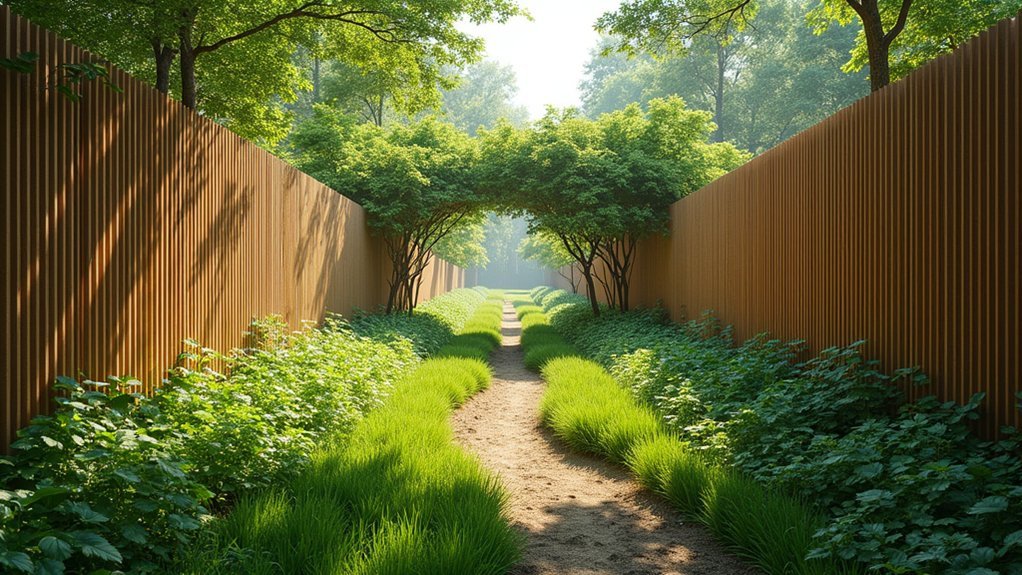
While migration patterns require seasonal fence adaptations, maintaining property security year-round presents another challenge for wildlife corridor design. You can achieve both security and ecological connectivity by incorporating wildlife-friendly features into your fencing solutions.
Consider these effective approaches:
- Install gaps or wildlife gates at strategic locations along your fence line to create wildlife corridors while maintaining secure boundaries.
- Lower fence heights to 1.2m or less and guarantee at least 30cm ground clearance to facilitate movement of smaller animals.
- Collaborate with local conservation experts to identify the most effective placement for wildlife corridors based on existing migration patterns.
Frequently Asked Questions
How Much Does Wildlife-Friendly Fencing Typically Cost Compared to Conventional Options?
You’ll find wildlife-friendly fencing costs 15-30% more than conventional options initially, but you’re often saving money long-term through reduced maintenance and repair costs while helping animals move safely.
Can Wildlife Corridors Increase Disease Transmission Among Animal Populations?
Yes, wildlife corridors can potentially increase disease transmission as they connect previously isolated populations. However, you’ll find that these benefits typically outweigh risks, as corridors enhance genetic diversity and population resilience overall.
Do Insurance Companies Offer Discounts for Wildlife-Friendly Property Boundaries?
Some insurance companies do offer discounts if you’ve installed wildlife-friendly boundaries that reduce animal collisions or property damage. You’ll need to check with your specific provider about their environmental stewardship programs.
How Often Should Wildlife Passage Points Be Monitored and Maintained?
You’ll want to monitor your wildlife passage points seasonally, with additional checks after storms. Regular maintenance every 3-6 months guarantees they remain accessible, unobstructed, and safe for animals traversing your property.
Are There Tax Incentives Available for Implementing Wildlife Corridor Designs?
Yes, you’ll find tax incentives through conservation easements, federal programs like EQIP, and state-specific wildlife habitat improvement credits. Check with your tax advisor and local conservation agencies for available deductions in your area.
In Summary
You’re now ready to transform your property boundaries into bridges for nature. By embracing these wildlife-friendly fence designs, you’ll create safe passages for local animals while maintaining your property’s boundaries. Remember, you’re not just building a fence—you’re connecting fragmented habitats. Start small, observe the results, and you’ll soon witness the remarkable difference your thoughtful design makes in your local ecosystem.
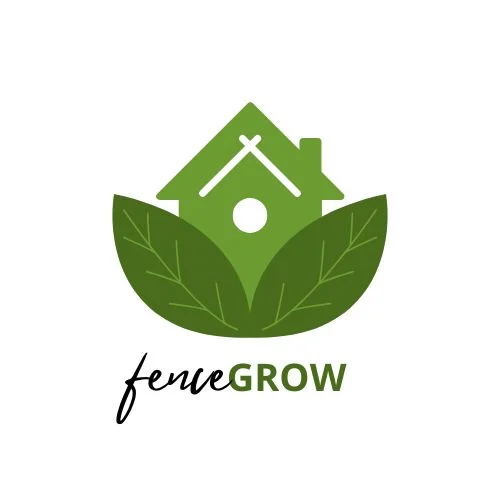
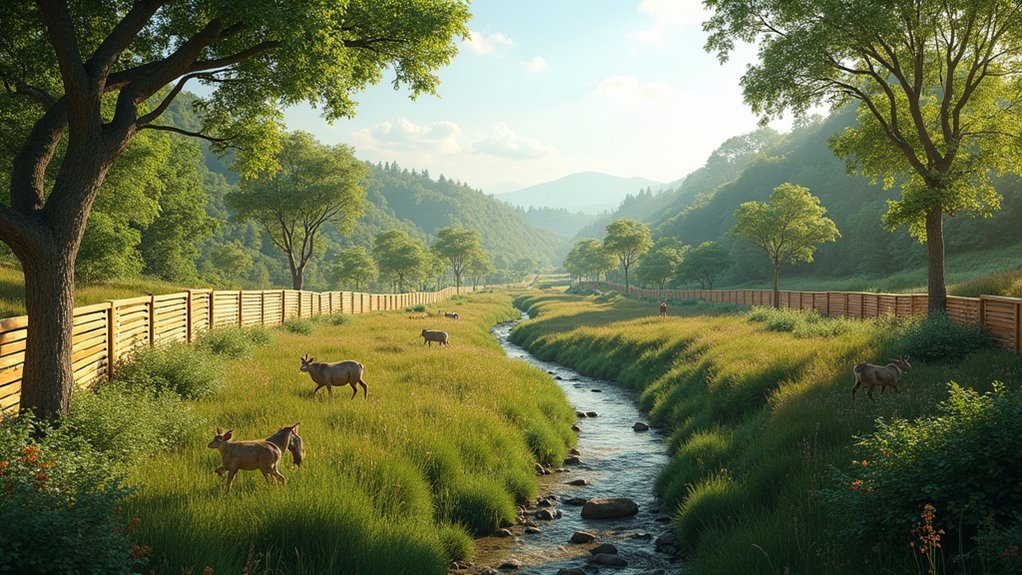

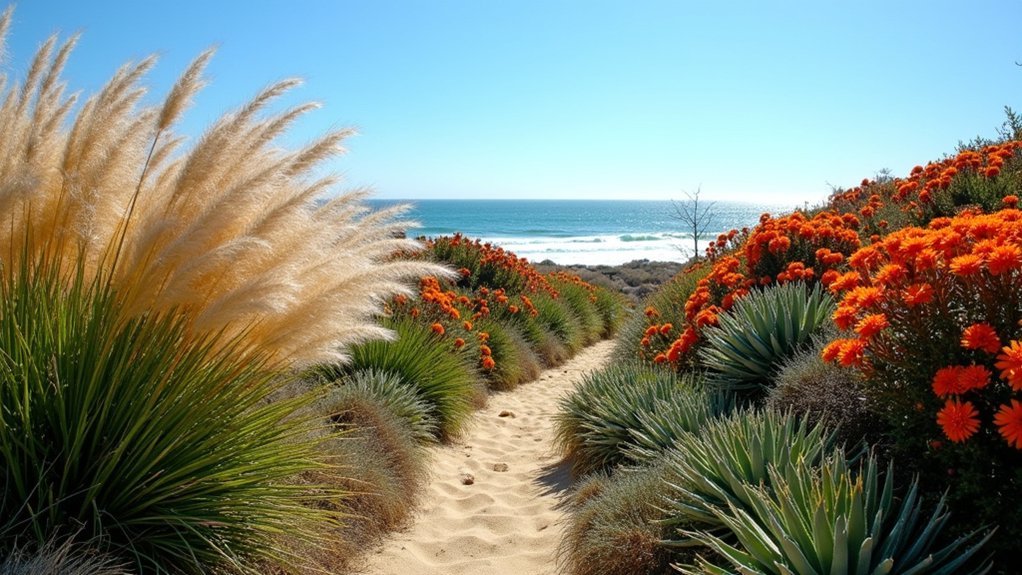
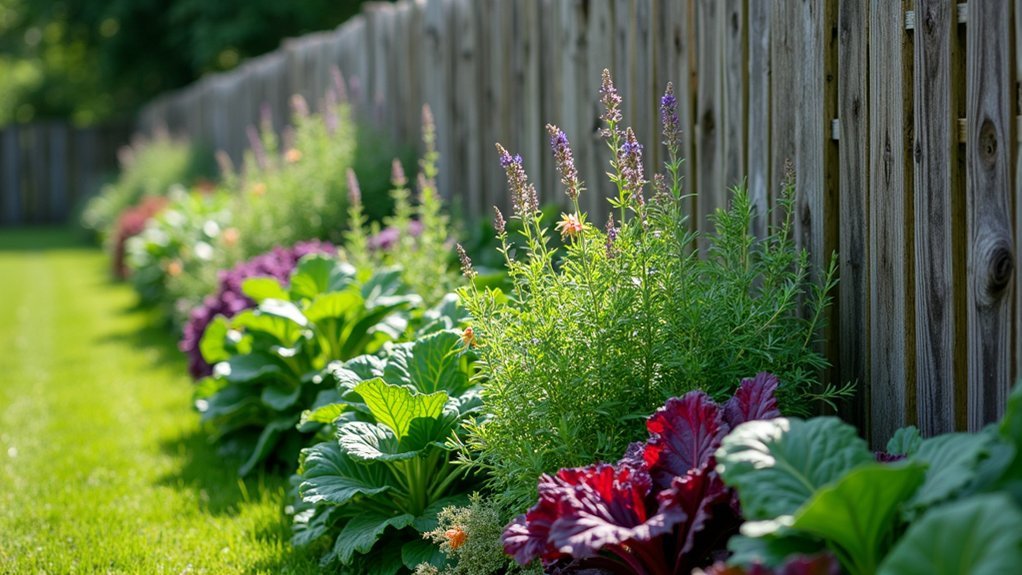
Leave a Reply